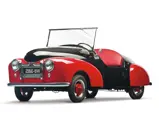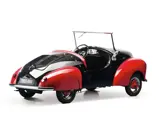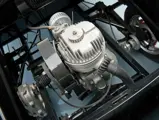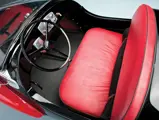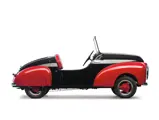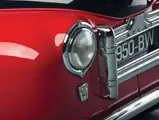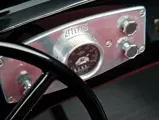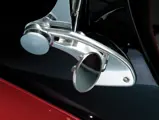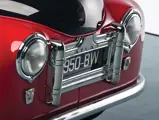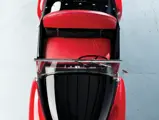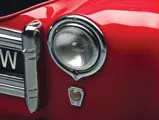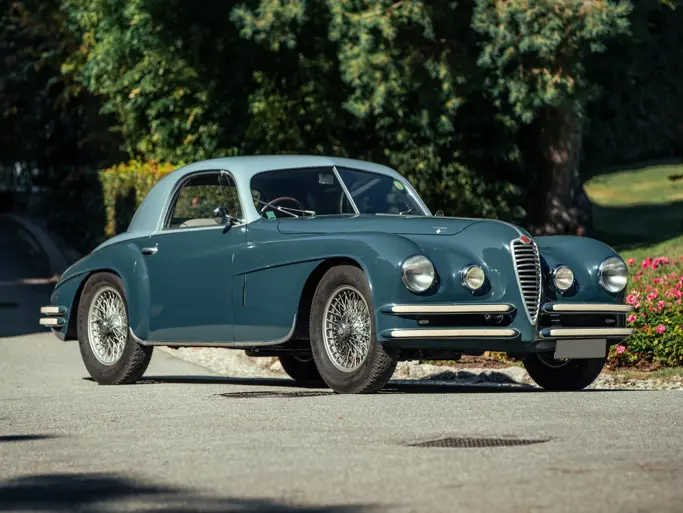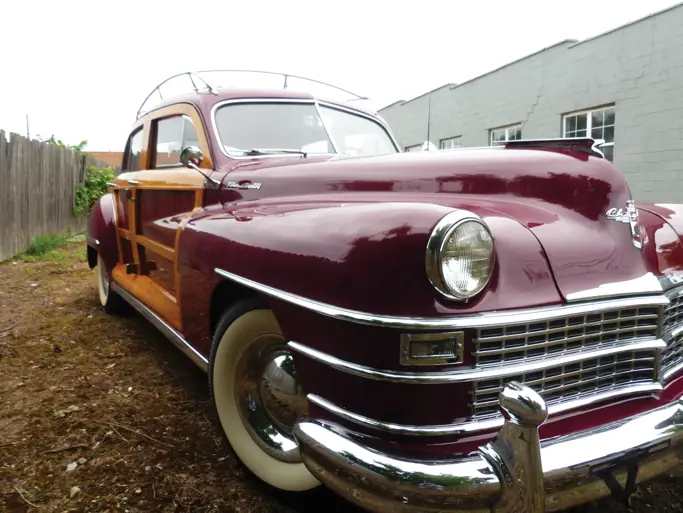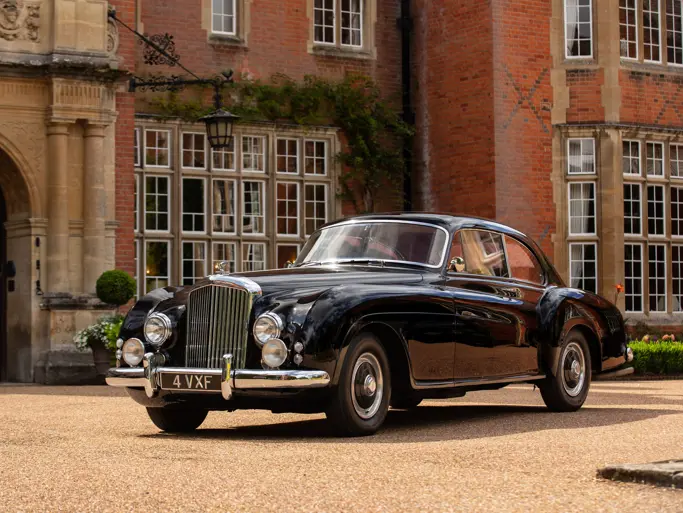The Bruce Weiner Microcar Museum
1951 Atlas Babycar
{{lr.item.text}}
$60,375 USD | Sold
 | Madison, Georgia
| Madison, Georgia
{{internetCurrentBid}}
{{internetTimeLeft}}

An exceptionally rare and elegant roadster discovered in France.
SPECIFICATIONS
Manufacturer: Société Industrielle de Livry
Origin: Paris, France
Production: very limited
Motor: AMC 1-cyl., 4-stroke
Displacement: 175 cc
Power: 8.5 hp
Length: 9 ft.
Identification No. FH297
The Societe Industrielle de Livry (S.I.L.) was a specialist in the limited production of ultra-economical vehicles, but their products were rarely seen outside of France. There appears to be a curious relationship between the Sofravel “Coccinelle” (Ladybird) shown at the 1948 and 1949 Paris Salons by the Société Annonay Sofravel and the Atlas first shown by S.I.L. in 1949, also at first called “Coccinelle,” and they bore a striking resemblance to each other in terms of their roadster shape with rounded bulbous fenders. Interestingly, the neighbouring stand to Sofravel was that of Duriez, a firm involved in converting war surplus American trucks and designing four-speed gearboxes for the 2CV Citroën, who were then contracted to build the Atlas for S.I.L.
The design of the Atlas changed in detail over the first year or so. The windshield shape, grille casting, seat cushion type, and headlamp height were adjusted, and the addition of doors was a wise addition to suit its largely female demographic. Early in its development, the name had been changed to “Babycar.” Surprisingly, the attractive compound-curved shapes were rendered entirely in steel by the skilled craftsmen at Duriez.
The S.I.L. chassis was a very well-engineered design, being of strong tubular construction with A-arm and coil spring front suspension, triangular trailing arms at the rear, rack-and-pinion steering, and cable brakes to all wheels. Several motors in different sizes were offered, including a 125, a 150, a 175, and even a 250-cubic centimeter electric start ILO, but the familiar 175-cubic centimeter AMC unit was eventually settled upon. To circumvent the need for an expensive differential, the motor drove only the left rear wheel via a cardan shaft to a cable-operated separate gear case incorporating a reverse gear (which was not necessarily available on many of the small scooter-type motors used by other voiturettes). Starting was via a floor-mounted pull-lever in the cabin. Wheels were attractive two-piece aluminum castings.
In fact, the makers were so pleased with their chassis that they decided the basic design could be used as the platform for three different small cars placed at different price points. This was an idea that had previously been put forth by the keen cyclecar advocates in the press. The Atlas would be the most expensive at 245,000 francs. The Kover, introduced in 1950, was at an intermediate level at 215,000 francs, and the bare-bones Le Piaf, introduced in 1951 at 200,000 francs, would be the most economical. The Kover eschewed the Atlas’ doors, folding windshield, inbuilt headlamps, and baroque grille and headlamp alloy castings for a substantial price reduction. The Le Piaf (Sparrow) was an ultra-minimal runabout very much along the lines of the Voisin Biscooter. These striking vehicles, with their flat alloy panelwork with completely open sides, their steeply raked windshields, and their canvas hammock-type seats provided plein air motoring for those with the thinnest of purses, but they also conversely suited the glittering beach resorts of the Côte d’Azur. Despite the three-pronged approach, sales did not materialize to any great extent, and S.I.L. was not heard from at the 1953 Salon.
This car was found in original condition in France, but its exceptional rarity and elegant roadster lines made a thorough and accurate restoration imperative. Reference material from the post-war French press was in scarce supply, and much use was made of the jeweler’s loupe in studying the period photographs. Fabrication of the ornate alloy grille castings was particularly trying. A poignant statement about the scarcity of materials of the time was the discovery of one franc coins being used in place of steel flat washers on the Atlas’ steering arms. A remarkable microcar indicative of the times in which it was born!

